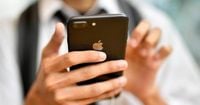As the 2025-2026 school year kicks off, a seismic shift is underway in classrooms from New York to Texas and throughout South Dakota: cell phones, once omnipresent in students’ hands and pockets, are being locked away, banned, or otherwise relegated to the sidelines during the school day. In a movement that’s swept across the United States with rare bipartisan momentum, educators, legislators, and parents are grappling with the challenge of balancing digital citizenship with the need for distraction-free learning environments.
According to South Dakota Searchlight, nearly all school districts in South Dakota now have some form of cell phone policy, with about one-third enforcing strict rules requiring high school students to lock away their phones for at least part of the day. Districts like Waverly-South Shore have instituted a system where students deposit their devices in slotted, locked boxes labeled by their last period teacher’s name, only retrieving them at the end of the day. Platte-Geddes was among the first in the state to adopt such measures back in the 2022-23 school year, motivated by a desire to foster more genuine social interaction during lunch and to curb poor decisions related to social media.
“We decided that since the kids are in class the majority of the day, they need to talk to one another during lunch. We want that social interaction,” Platte-Geddes Superintendent Joel Bailey told South Dakota Searchlight. “Albeit, it’s a noisier lunch room now, at least they’re talking and interacting.” The district’s investment in locking pouches—costing a couple thousand dollars every few years—has, in Bailey’s view, paid off: “We’re not experts on this. But it’s worked. I would not hesitate to make the same decision again.”
Other South Dakota districts, such as Dupree and Wall, have experimented with different approaches, from clear locked boxes to pouches that block phone signals to watches and earbuds. While some allow students access to their phones during lunch or between classes, others enforce a full-day ban. The Dupree School District, for example, spent a modest $300 on new locked boxes for high schoolers this year, while Waverly invested $1,000 in 14 lock boxes. The Wall School District has upgraded to pouches that prevent any digital communication during the day, but Superintendent Sally Crowser isn’t ready for a full ban just yet, allowing limited use during breaks.
At the state level, the South Dakota Legislature passed a resolution in February 2025 encouraging local school boards to limit cell phone use during instructional time. The Department of Education is now tasked with surveying districts, analyzing national best practices, and reviewing research on the impact of personal technology in schools. Secretary Joseph Graves expressed support for these local initiatives, emphasizing that “research shows smartphones have a direct impact on student learning and the classroom culture.”
The impact of these policies, while not universally tracked in terms of academic outcomes, has been felt in other ways. In Gettysburg, a survey conducted after the first year of a locked-phone policy found that most teachers observed increased engagement, and a majority of students reported improved focus in class. However, about half of the students felt just as stressed or distracted without their devices, and most didn’t notice much change in peer interaction. Still, the cost of implementation—Gettysburg’s locked pouches ran $4,400—hasn’t deterred districts from continuing or expanding their programs.
But South Dakota is not alone. In Texas, a statewide mandate now requires every public and charter school student to be without their phones during the school day. Brigette Whaley, an associate professor of education at West Texas A&M University, tracked a cell phone ban in a west Texas high school and found that teachers reported more participation and less anxiety among students. “They could relax in the classroom and participate,” Whaley told NPR. “And not be so anxious about what other students were doing.” The fear of being filmed or embarrassed evaporated, creating what Whaley described as “a more equitable environment.”
Nationwide, 31 states and the District of Columbia have now enacted restrictions on student cell phone use in schools, according to Education Week. The trend has found support across the political spectrum—a rare feat in today’s climate. Yet, the rollout hasn’t been without bumps. Whaley noted that enforcement can be inconsistent, as not all teachers are on board. In Portland, Oregon, social studies teacher Alex Stegner described how some colleagues were lax about locking up phones, undermining the policy’s effectiveness. But for Stegner, the change was transformative: “I was committed to kind of going all in with it and I liked it.” For the first time in a decade, he didn’t spend class time “chasing cell phones around the room.”
As bans extend to cover the entire school day, new logistical and financial challenges have emerged. Lincoln High School in Portland is distributing individual Yondr pouches—lockable bags used by about 2 million students nationwide—that cost around $30 each. For a school of 1,500 students, the price tag is significant, and pouches are sometimes destroyed or tampered with. States like Delaware have set aside funds to help districts transition, with $250,000 earmarked for pilot programs. Rosalie Morales, who oversees Delaware’s initiative, reported overwhelming teacher support—83% of teachers favored continuing the ban—but only 11% of students agreed.
Students, unsurprisingly, are less enthusiastic. Zoë George, a senior at Bard High School Early College in New York City, told NPR the ban is “annoying,” especially as it complicates logistics during free periods and limits her ability to capture memories with friends. “I wish that they would hear us out more,” she said, expressing concern about not being able to use her phone for schoolwork or communication during off-campus lunch.
New York State’s bell-to-bell ban on devices, which began the week of September 1, 2025, marks a dramatic turnaround from earlier policies. In 2006, then-Mayor Mike Bloomberg enacted a citywide ban in New York City, but enforcement was inconsistent and students found ways to sneak phones in. Mayor Bill de Blasio lifted the ban in 2015, citing the realities of modern parenting. But as J. Bryan McGeever, a longtime New York City teacher, wrote in The New York Daily News, teachers have struggled for over 20 years to keep distractions at bay. “We teachers have given our students the same directive for over 20 years now: Please put that thing away. They’ve been unable to comply.”
McGeever paints a vivid picture of the chaos cell phones have brought to schools—exams leaked via text, pizza deliveries to classrooms, and social drama playing out in real time. He supports the new ban as “long overdue,” hopeful that 6.5 hours of “mandated peace” each school day will allow students to focus, engage, and maybe even resolve conflicts without the threat of viral videos or online embarrassment.
Amidst all the policy changes, a philosophical divide remains. Some educators, like Wilmot Superintendent Nicholas Olson in South Dakota, argue that schools have a duty to teach responsible digital citizenship, not simply enforce bans. “With public schools specifically, a lot of things we do center around preparing students to be contributing members of society,” Olson told South Dakota Searchlight. Yet even Wilmot has toughened its rules, forbidding phones during bathroom breaks and imposing stricter consequences for misuse.
As the new school year unfolds, it’s clear that the era of unchecked cell phone use in American classrooms is drawing to a close. Whether these policies will foster deeper learning, stronger relationships, or simply a bit more peace and quiet remains to be seen. But for now, the locked boxes, pouches, and bans are here to stay—at least until the next digital revolution comes calling.






